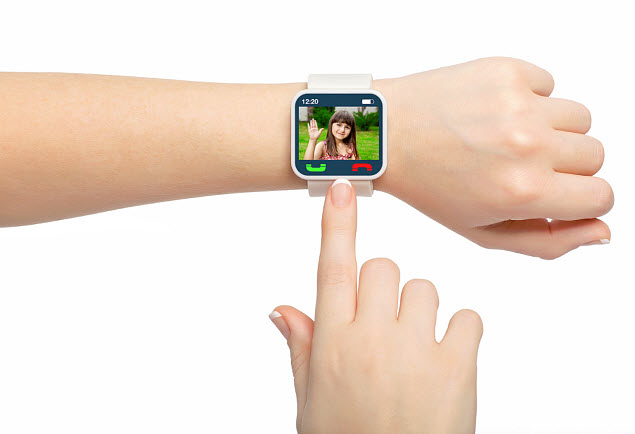The Meta M1 premium wearable technology is now being sold in a number of band options and colors.
It feels as though this is the year in which smartwatches are being announced, unveiled, or released with every passing week, but while many of them struggle to provide consumer with an appealing design or style, Meta Watch is hoping to overcome that barrier with its Meta M1.
When creating this wearable technology product, the company prioritized look at the same level as function.
Though the Meta M1 smartwatch had initially been expected for a spring release, after it had made its first appearance in the form of its prototype at the January CES trade show, the wearable technology gadget has only just recently been released for preorder. That said, it is available in a range of different band options, finishes, and colors. The M1 Core can be purchased in a stainless steel case, with a band that is either steel, leather, or rubber. The price ranges from $249 to $349, depending on the options that have been selected.
The M1 Color smartwatch is available with a band made of red or white rubber, with a stainless steel case.
 That device is being sold for $249. Finally, the premium model of the brand’s wearable technology is the M1 Limited smartwatch, which offers a rose gold plated case with a blue crocodile strap, or a black case with a brown leather strap, being sold for $399. There is also a black M1 limited that has a black steel band that is being sold with the largest price tag, at $449. While they can be purchased as a pre-order now, it is expected that the devices will actually start shipping in September.
That device is being sold for $249. Finally, the premium model of the brand’s wearable technology is the M1 Limited smartwatch, which offers a rose gold plated case with a blue crocodile strap, or a black case with a brown leather strap, being sold for $399. There is also a black M1 limited that has a black steel band that is being sold with the largest price tag, at $449. While they can be purchased as a pre-order now, it is expected that the devices will actually start shipping in September.
The design of the watch was created by Frank Nuovo, who is known for his time with Vertu and Nokia. The pivot points on the strap of this smartwatch are a unique form, which allows the wearable device to be able to conform to the wrist of the wearer in a much more accurate – and hopefully comfortable and attractive – way than the traditional form of a wristwatch strap.
A new mobile app is using location based tech to make sure that the ill can find the medical services they need.
Geolocation technology has been shown to be successful for use in mobile marketing and in specific programs such as ride sharing services, but this tech is now also branching out into health care as a location based app makes it possible for patients to use their smartphones to arrange for house calls from a physician.
The smartphone service, called Pager, is currently available only to patients living in Brooklyn and Manhattan.
The intention of the service is to start spreading outward into other cities by 2015. This geolocation technology based app has only just launched in May, but is becoming quite popular among mobile device users. The tech behind the application was designed by Oscar Salazar, the co-founder of Pager, who had also previously been an engineer on the team that was behind the creation of the on demand ride share technology that is now used by Uber.
Salazar used his knowledge of geolocation technology to come up with a new service along with two other entrepreneurs.
 Together, the group of three people managed to raise $3.5 million in investment capital in order to create and launch the Pager mobile app. The marketing director at Pager explained that “We do share some of that [Uber] DNA.” He also added that through the use of this service, “Our doctors come to you. It’s on demand.”
Together, the group of three people managed to raise $3.5 million in investment capital in order to create and launch the Pager mobile app. The marketing director at Pager explained that “We do share some of that [Uber] DNA.” He also added that through the use of this service, “Our doctors come to you. It’s on demand.”
This startup has joined a rapidly growing health care trend that has seen patients looking to try to step away from the experience of primary care clinics and hospitals, in order to receive “convenience care.” That sector involves a number of different types of service, including urgent care clinic based episodic treatments. However, many people are also starting to see the opportunity presented by care offered in a person’s own home through the use of video conferencing, email, remote health monitoring, and – through this service – actual house calls.
Patients and insurance companies, alike, have been working hard to steer health care out of emergency rooms, where the highest treatment costs are generated. With geolocation technology, this is becoming possible, even without having to call ahead to schedule appointments or sit around for ages in a waiting room.
 That device is being sold for $249. Finally, the premium model of the brand’s wearable technology is the M1 Limited smartwatch, which offers a rose gold plated case with a blue crocodile strap, or a black case with a brown leather strap, being sold for $399. There is also a black M1 limited that has a black steel band that is being sold with the largest price tag, at $449. While they can be purchased as a pre-order now, it is expected that the devices will actually start shipping in September.
That device is being sold for $249. Finally, the premium model of the brand’s wearable technology is the M1 Limited smartwatch, which offers a rose gold plated case with a blue crocodile strap, or a black case with a brown leather strap, being sold for $399. There is also a black M1 limited that has a black steel band that is being sold with the largest price tag, at $449. While they can be purchased as a pre-order now, it is expected that the devices will actually start shipping in September.
 Together, the group of three people managed to raise $3.5 million in investment capital in order to create and launch the Pager mobile app. The marketing director at Pager explained that “We do share some of that [Uber] DNA.” He also added that through the use of this service, “Our doctors come to you. It’s on demand.”
Together, the group of three people managed to raise $3.5 million in investment capital in order to create and launch the Pager mobile app. The marketing director at Pager explained that “We do share some of that [Uber] DNA.” He also added that through the use of this service, “Our doctors come to you. It’s on demand.”